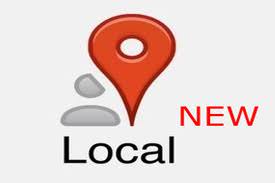Before early 2011, there was a great deal of speculation about what changes might be expected in relation to Google Places Business Optimization in light of Google’s planned alterations. Today, now that the changes have been implemented, and continue to be updated, it’s important to evaluate whether there are improvements that you can make that will help you attain higher Google Local Optimization rankings.
Tips for Ranking Higher in Google Local Optimization
 In order to groom your website so that it can compete successfully for higher rankings, it’s important to know the key difference between the way in which search engines formerly ranked websites and the current method. In the past, website designers followed the rule ‘more backlinks = higher rankings’. Google’s new algorithm is less impressed with backlinks. Instead, it is more impressed with, and therefore gives higher rankings to, sites with verified authors and indications of good visitor experience.
In order to groom your website so that it can compete successfully for higher rankings, it’s important to know the key difference between the way in which search engines formerly ranked websites and the current method. In the past, website designers followed the rule ‘more backlinks = higher rankings’. Google’s new algorithm is less impressed with backlinks. Instead, it is more impressed with, and therefore gives higher rankings to, sites with verified authors and indications of good visitor experience.
There are some common sense ways that you can convince the search engines your website is worthy of higher rankings. For instance, place a profile picture of yourself near your blog posts. Make frequent updates to your profile, showing active participation in the website’s maintenance. Spruce up your website’s design so that visitors will spend more time viewing, and reduce bounce rate.
In addition to giving visitors to your website a clear impression of who your are and what information you offer, and doing that in an attractive format, you will want to become familiar with using the search engine’s favored html tags and social media outreach techniques. Here are some basics to get you started.
Using Schema markups will help ensure that search engines can access the information in your website, and this in turn will enhance your rankings. The more targeted search options offered by Schema makes it easier for visitors to find exactly what they are looking for on the internet. Websites that incorporate this will be more apt to have higher rankings.
The new search engine methodology not only looks at your authorship validity, it also ‘judges’ the authorship validity of other websites that you have circled with Google+. If those sites have good rankings, it can have a positive influence on your site’s rankings. For that reason it’s important to be mindful when networking.
If you have links on your website, take care that visitors will be able to follow those links to valid websites. Deadend links will appear unappealing to the search engines, and will negatively impact visitors’ experience. The new search engines’ purpose is to give people the best possible search results. If you have links that go nowhere, search engines will see that, and you might not achieve optimum search rankings.
With the changes that were made by Google local optimization in 2011, you can now expect to receive favorable rankings if your site is focused, attractive, with valid authorship and follows Schema markup. This is an encouraging scenario for website authors who are devoted to giving their visitors the best possible experience and high quality material. Keep these points in mind as you evaluate your website, and you can expect to attain optimum search engine rankings.